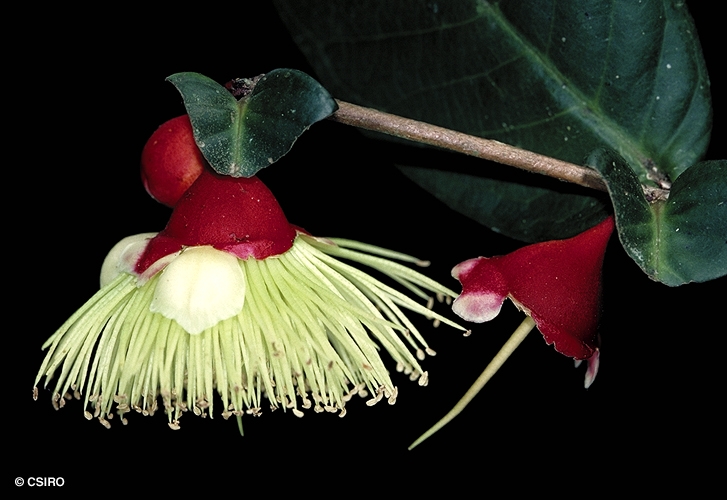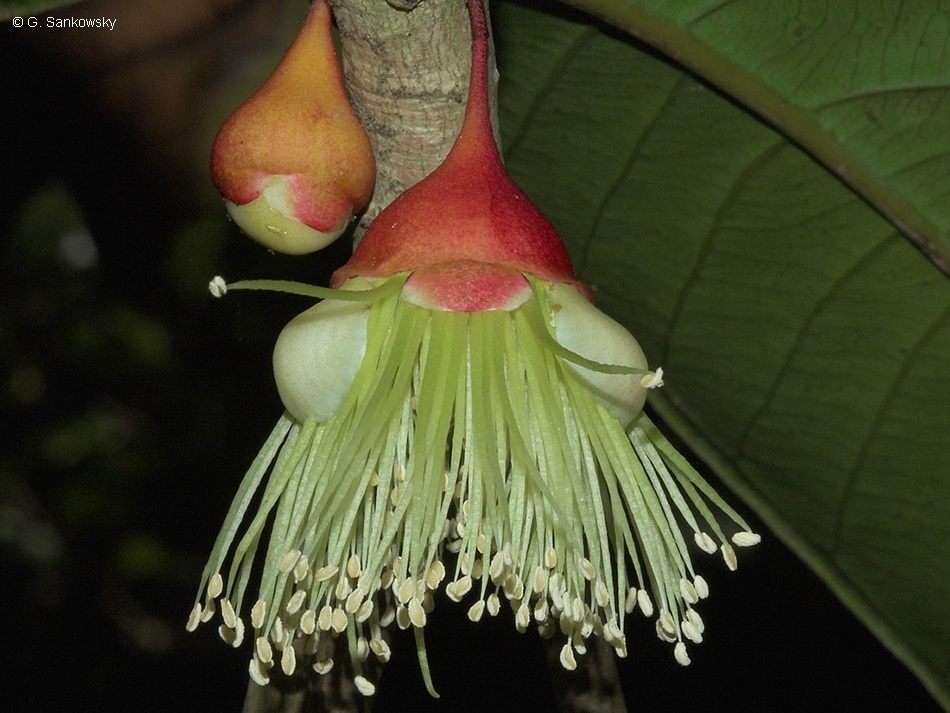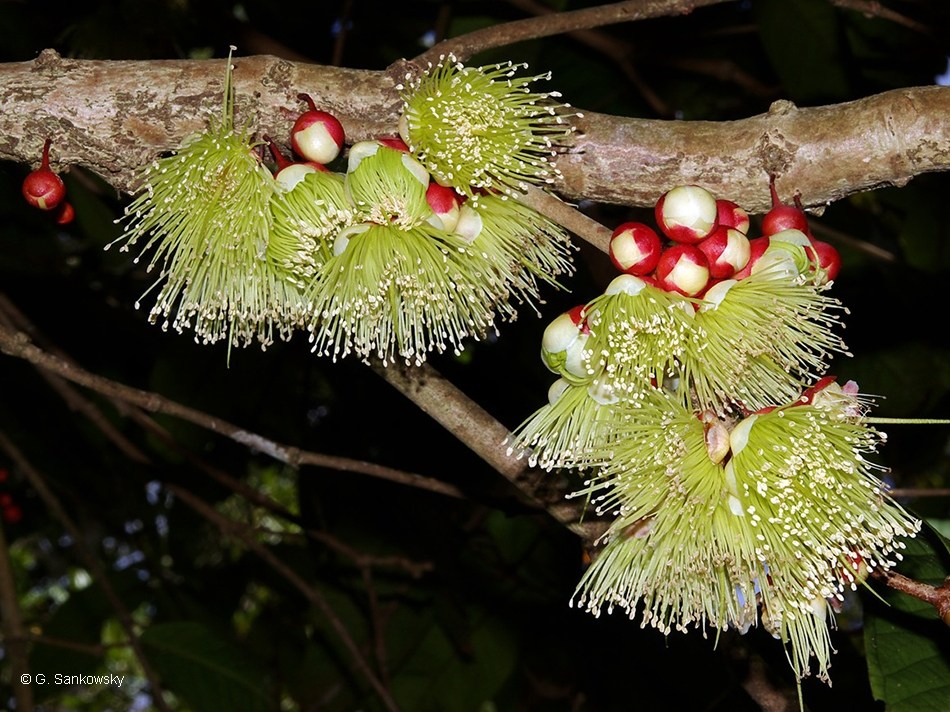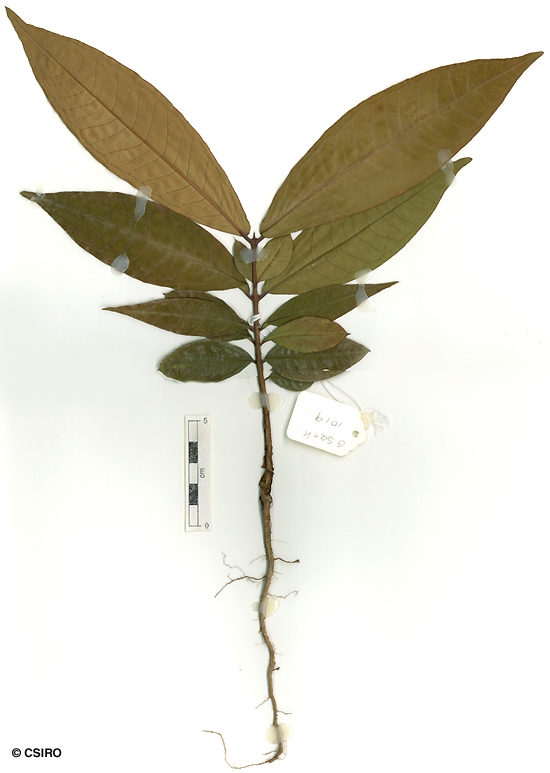Australian Tropical Rainforest Plants - Online edition
Syzygium erythrocalyx (C.T.White) B.Hyland







Hyland, B.P.M. (1983) Australian Journal of Botany Supplementary Series 9: 79.
Satinash, Scarlet; Scarlet Satinash; Satinash, Johnstone River; Satinash, Daintree; Satinash, Bumpy Red Bud; Red Bud Satinash; Johnstone River Satinash; Daintree Satinash; Bumpy Red Bud Satinash
Trunk bumps normally hollowed out by black ants (Iridomyrmex gilberti) which emit an unpleasant odour when crushed.
Bracts deciduous, absent at anthesis. Calyx tube (hypanthium) + pedicel about 12-20 mm long, calyx tube (hypanthium) about 11-22 mm diam., calyx lobes rounded, concave, inner lobes larger, about 6-10 mm long. Petals +/- orbicular, about 15-25 mm diam., oil dots visible, more than 100 per petal, distributed over most of the petal except the margin. Outer staminal filaments about 20-35 mm long, glandular, anthers about 2.5-3 x 1-1.5 mm, gland terminal, comparatively small and inconspicuous. Ovules about 30-55 per locule, placentas central, ovules radiating, ascending. Style about 25-45 mm long, approximating the stamens.
Fruit borne on bumps on the trunk and also on the twigs and branches; depressed globular, attaining about 50-70 mm diam., (generally somewhat smaller); calyx lobes persistent, fleshy, about 5-10 mm long, pericarp succulent. Seed solitary or three or more per fruit, about 25-40 mm diam., testa adhering slightly to the pericarp and also to the rugose surface of the uniformly textured cotyledons. Radicle central, cotyledonary stipules not apparent. White-fruited varieties mainly cauliflorous and 1-seeded. Red-fruited varieties mostly terminal, axillary and ramiflorous and rarely only 1-seeded.
This species deserves to become widely planted in tropical gardens. Large yellow flowers are produced in clusters from the smooth pinkish stem and attract many species of birds. The large fruits are white, pink or red.
This species does not produce useful logs and is of no commercial value. Wood specific gravity 0.61. Hyland (1983).





